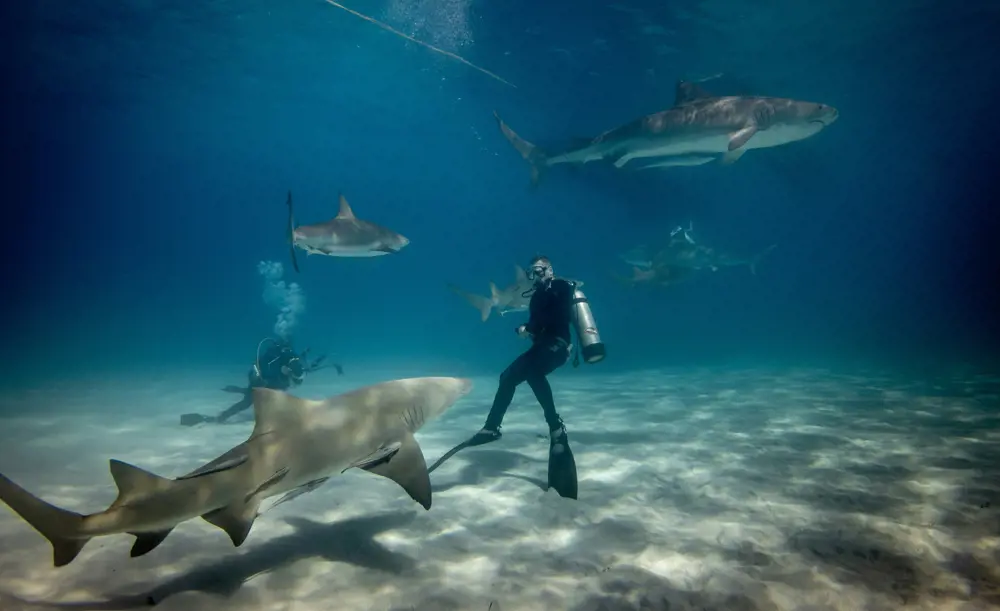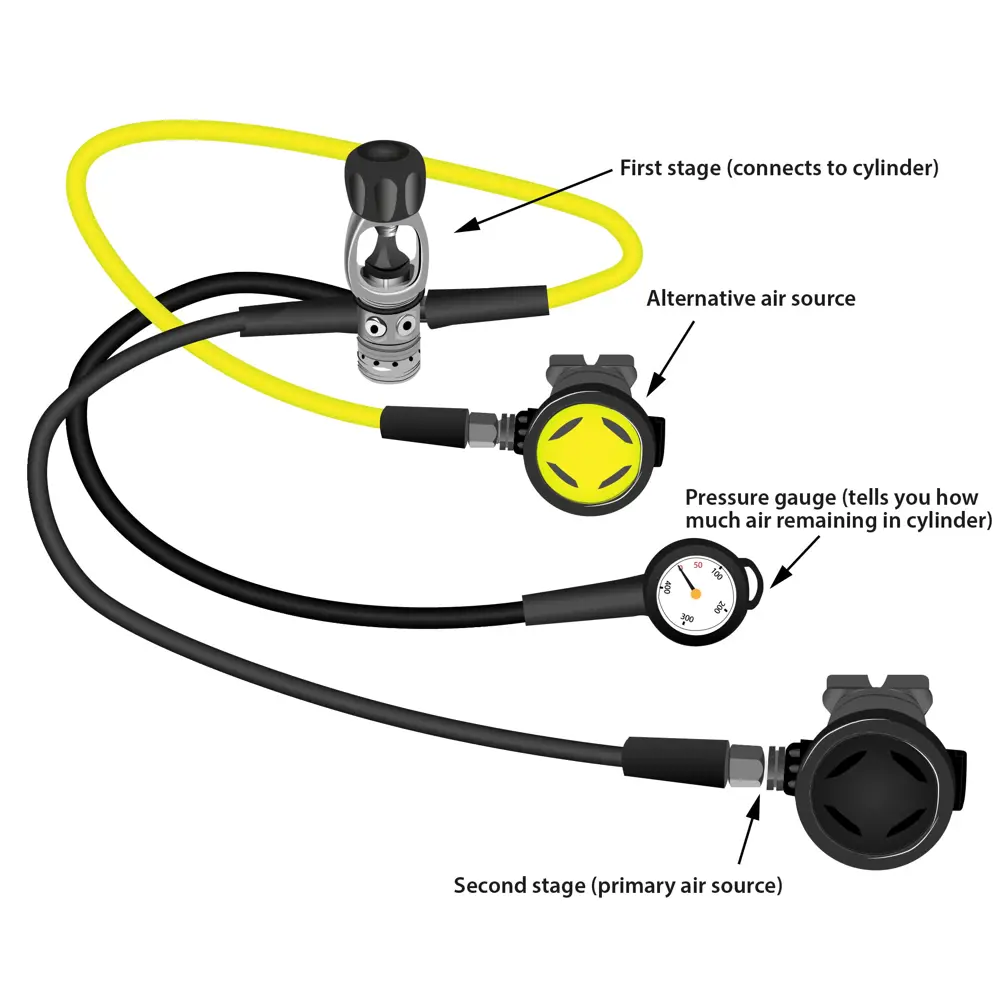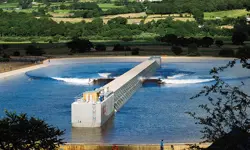
How does scuba gear work?
Covering 71% of the Earth’s surface, the ocean is a largely unexplored world. Recreational scuba diving, where divers swim with their own independent air supply, allows humans to experience this environment firsthand. People are drawn to scuba diving for many reasons, but since humans cannot breathe underwater, divers rely on dependable engineered equipment to safely breathe air beneath the surface.
Carrying air underwater
Divers carry air on their backs in cylinders, but if the cylinders were simply filled with air at atmospheric pressure, they wouldn’t be able to stay underwater for long. As a diver descends, water pressure rapidly increases – as does the density of air that the diver is breathing in. At a depth of just 10 metres, the surrounding pressure has already doubled, meaning a person would need twice as much air to fill their lungs with the same breath.

As a diver descends, water pressure rapidly increases – as does the density of air that the diver is breathing in © Unsplash / Gerald Schombs
To solve this, standard scuba cylinders store air compressed up to 300 times atmospheric pressure. A typical 12-litre cylinder, holds about 3,600 litres of air – enough to fill 10 refrigerators and provide divers with enough air to stay underwater for much longer. Made from aluminium or steel alloys, the cylinders are designed to be portable and withstand extreme pressures while remaining corrosion-resistant for their continuous use underwater.
Regulating every breath
The high-pressure air cannot be breathed directly, so a scuba regulator – the equipment that connects the cylinder to the diver’s mouth – reduces the pressure sequentially in two stages. “Taking air from 300 bar to a breathable less than 25 millibar is a significant engineering feat,” says Gavin Anthony, a scientific adviser to the British Sub-Aqua Club.

The components of the two-stage regulator © Shutterstock
The first stage of the regulator is attached to the cylinder, and it reduces the air pressure from the cylinder to an intermediate level using a diaphragm or piston mechanism. As a diver descends, the increasing water pressure pushes against the diaphragm or piston, which moves to keep the intermediate pressure at about 10 bar above the surrounding water pressure of the diver. The force needed to maintain this pressure difference comes from a compressed spring inside the first stage. Air then flows through a hose to the second stage within the mouthpiece.
“From that 10 bar, just a small inhalation from the diver takes the pressure down to just a few millibars,” Gavin says. Inside the mouthpiece, a flexible diaphragm moves as the diver inhales, opening a downstream valve that releases air only when needed, allowing it to expand and match the surrounding pressure for breathing. This on-demand system, rather than a continuous flow, makes air consumption more efficient. “When someone is resting, they take in only a small amount of gas from the regulator, but equally, if they are exercising vigorously and require more air, the regulator gives them the amount they need,” he adds.
When someone is resting, they take in only a small amount of gas from the regulator, but equally, if they are exercising vigorously and require more air, the regulator gives them the amount they need
Gavin Anthony, scientific adviser to the British Sub-Aqua Club
Easy breathing
To ensure scuba regulators are easy to breathe from, they must meet strict safety standards and undergo testing using a breathing simulator. Gavin explains that: “in the UK and Europe, the EN 250 rating marked on your regulator indicates it has been tested to meet those safety standards”. The equipment that divers use to breathe underwater has been refined over decades of research, and the engineering behind it means that divers are able to breathe easily so they can fully immerse themselves in the sights and wonders that the ocean has to offer.
Contributors
Jasmine Wragg
Author
Keep up-to-date with Ingenia for free
SubscribeRelated content
Sports & leisure

How technology enhances the Wimbledon tennis experience
The All England Lawn Tennis and Croquet Club (AELTC) and IBM worked closely together since 1990 to harness innovative technology to transform The Championships into one of the most popular and technically advanced events on the international sports calendar.

Noise-cancelling headphones
Used by plane and train passengers wanting to listen to radio, music or film without hearing background noises, active noise-cancelling (ANC) headphones are able to prevent outside noise from leaking through to the inside of headphones.

How to create the perfect wave
From small waves lapping at your feet and swells suitable for surfing to storm waves for testing structures and even tsunamis, waves of any shape and any size can now be engineered. What are the techniques and conditions needed to model waves and what makes some more powerful than others?

The technology that helped Team GB's cyclists go for gold in Rio 2016
The success of Great Britain’s cycling team at the 2016 Rio Summer Olympic Games was celebrated, but what about the closely guarded technology that contributed to their success? The engineering approaches taken to shave as much time as possible off the clock are spoken about by Professor Tony Purnell.
Other content from Ingenia
Quick read

- Environment & sustainability
- Opinion
A young engineer’s perspective on the good, the bad and the ugly of COP27

- Environment & sustainability
- Issue 95
How do we pay for net zero technologies?
Quick read

- Transport
- Mechanical
- How I got here
Electrifying trains and STEMAZING outreach

- Civil & structural
- Environment & sustainability
- Issue 95